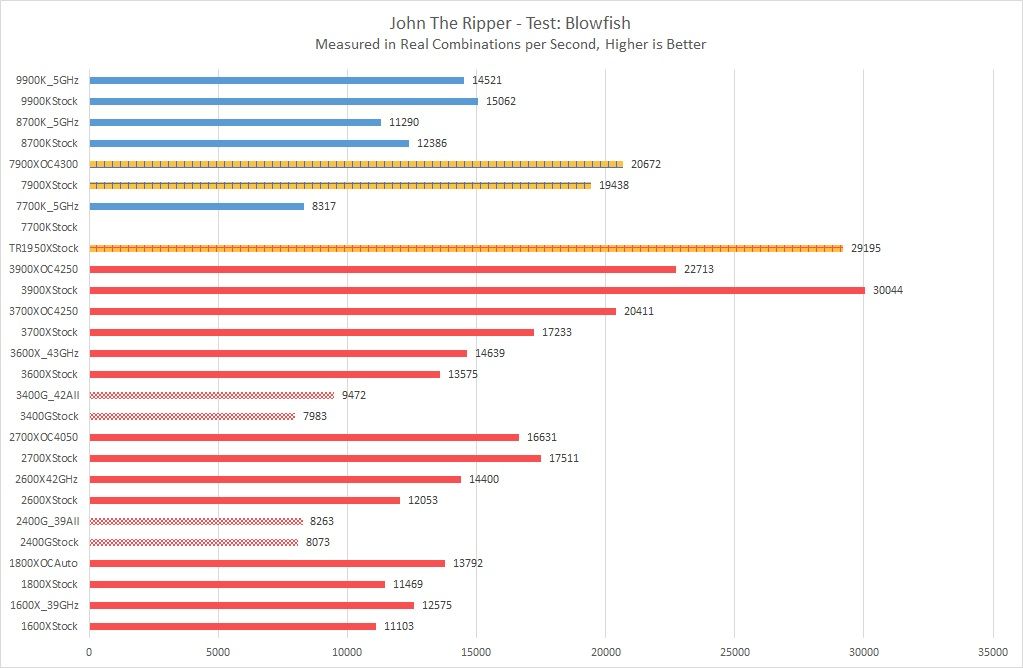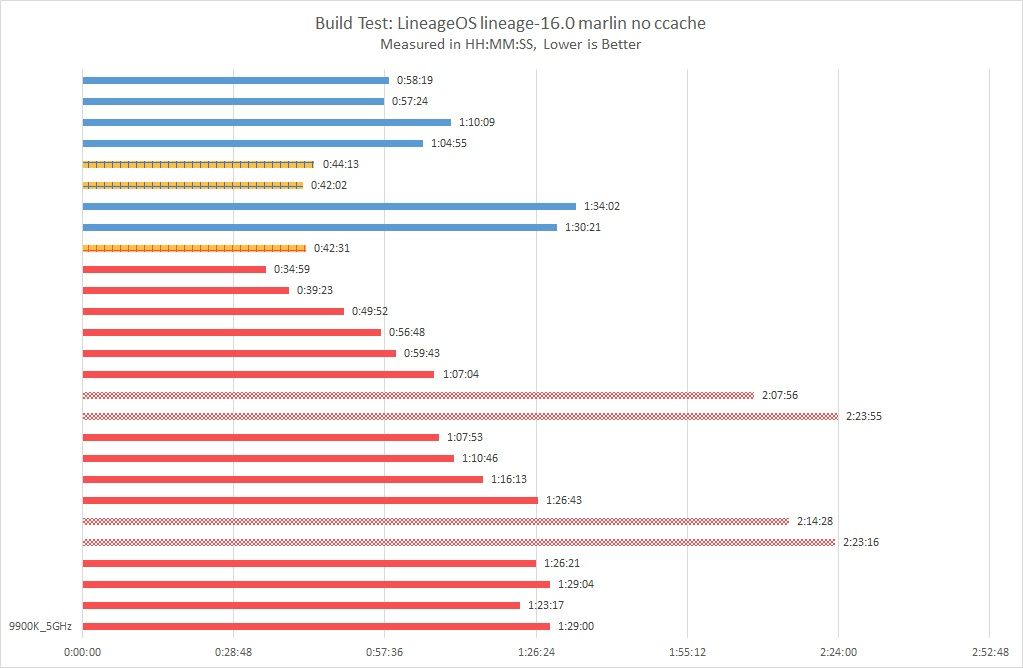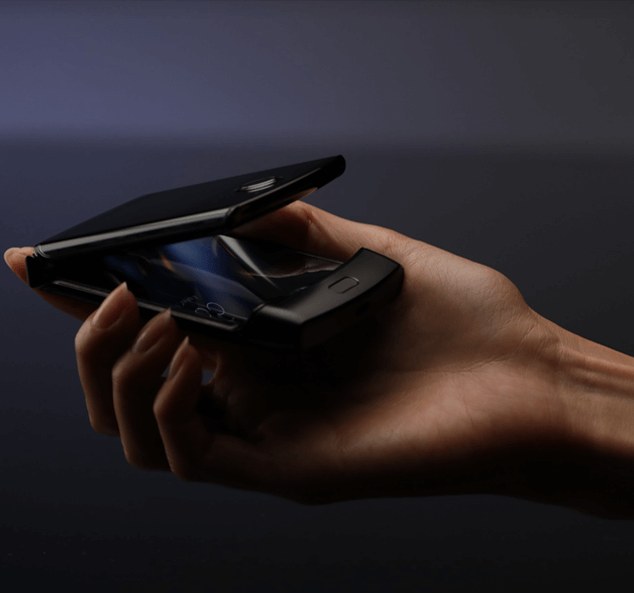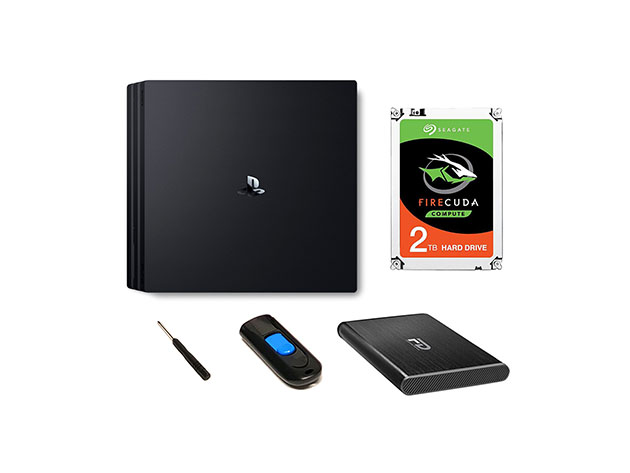AMD’s Next Horizon Gaming event, leading up to E3 2019, had given us a lot of information on the third generation of Ryzen. During the middle of testing for the 3900X and 3700X review, we received another package – this time containing the Ryzen 5 3600X and Ryzen 5 3400G. How would these fare compared to our previous third-gen Ryzen results?
We also wanted to take a look at certain models over each generation and see how they have improved during these three years. To assist in analyzing that, we broke out the previous 6-core, 12-thread samples and the initial generation of Ryzen-G.
Note: The Ryzen 5 3400G and Ryzen 5 3600X used in this review were provided by AMD for review purposes. A full list of components and sources are included in the article.
Unboxing/Initial Thoughts – Ryzen 5 3400G & Ryzen 5 3600X
Since we received most of the new components with the initial review, these processors came alone. The packaging is similar to the ones from before, and in this case, it makes sense to keep it simple. Since Ryzen-G follows one year behind in architecture, the 3400G continues to feature both Vega graphics and Zen+ processor architectures. It will be another year before it moves to Zen 2 and RDNA graphics architectures. The 3600X, however, is based on Zen 2 and offers a chance to see how well it performs at lower core and thread counts.









Testing Setup
Since we are keeping the same testing setup from the original batch of tests, there is not much more that needs to be included. The original Ryzen 5 2400G that I used in our 2018 review was left behind in Japan. Thankfully we were able to obtain another thanks to Shannon Robb. Shannon has offered support to XDA in some of our more ambitious projects and efforts for several years. We greatly appreciate that support.
As we have done with previous reviews, we will identify each component and how it was acquired. The list is almost identical to the previous review since we’re only swapping out CPUs in the tests conducted for this review.
Test Bench/Case (All Self-Purchased)
Power Supply (All Self-Purchased)
Motherboard
Processor (All provided by Intel/AMD, One Replacement by Other)
Memory
GPU (All Self-Purchased)
M.2 NVMe Storage (All Self-Purchased)
- Samsung MZ-VLW512A (2 identical parts)
Cooling
Additional Components (Self-Purchased)
Testing Methodology & Gen/Gen Comparisons
Tests remain conducted using methodology made publicly available. We set up and tested this on the first AMD processor, then tried to clone it for Intel testing. This did not provide reliable results so we instead wiped and re-created using the same process.
A file is available in Google Drive to view more of the notes. It also has been expanded to include side-by-side comparisons of the three generations at 6 and 8 core counts. Ryzen-G, following one year behind, has a similar comparison but only for the two generations it has been available. We’re not sure how many are interested in these breakdowns, so we’re doing this as a test. We hope that readers will let us know what they think and if they should be included in future reviews.
- Operating System: Ubuntu 18.04 LTS
- NVIDIA Drivers – latest nvidia-### available in standard PPAs
- AMD Drivers – AMDGPU (open source version)
The test results from our review of the Ryzen 7 3700X and Ryzen 9 3900X are used as the base for this review. We are avoiding updates to the test environment, for now, to limit the variables in our test cases.
Test Results
Benchmark Notes: Phoronix Test Suite’s CPU suite offers a plethora of tests and not all are included in this review. The full list of tests and results are available here, with the exception of our LineageOS build times. Those will be included later in the article. The color scheme for benchmarks continues to follow XDA’s traditional color scheme.
Chart Notes: As the number of test results increases, it has become necessary to change the formatting of the chart. At the same time, we believe we can still hold to XDA’s preferred colors while still identifying notable groups. Readers will notice several changes in this article and you should expect to see those changes reflected in future CPU test results.
CPU test result charts are now set as a bar chart. Intel remains in blue while AMD remains in red. HEDT remains yellow with a blue/red pattern to indicate Intel/AMD. Ryzen-G is indicated by a checkerboard effect. All colors remain the standard coloring used by XDA. Sorting is done manually and ordered in a manner that should easily allow readers to quickly identify what they want to find in those charts.
FFTW

The 2700X and 9900K results still show as the only outliers in the trend. Stock seems to do well and overclocking seems to add more benefits, except with the two noted in the 3700X/3900X review.
GZip Compression

Out of the new results, we see very few differences in the trend. The 2600X jump between stock and overclock is unusual compared to our other entries, but it still follows the normal trend.
SciMark 2 (Java)

All of the new results follow the trend with little exception. If anything, these results only highlight how the 2700X was an outlier.
John The Ripper

We actually found an irregularity in the 3400G results where it was significantly higher than it should have been. After some further review, we found that the data results exported were incorrect and were corrected using the raw data results from Phoronix Test Suite. The 2400G is odd in that overclocking did not produce as much of an improvement as the general trend.
C-Ray

The results of this test begin to show where Ryzen-G struggles in some cases to its more hearty siblings. The core and thread count really seems to make a difference here, and 4 cores really do seem to begin the bottleneck. This is also reflected in the 7700K since it has the same core and thread count.
This helps identify a trend of more cores and threads weighing more heavily on results than speeds unless something else is affecting that. We believe this is the case of the 9900K at 5 GHz, likely throttled due to temperature limits. Overclocking does continue to improve it except for the 2600X, the notable outlier in the new results.
Benchmarks: Build Performance
Build Test: LLVM

Continuing to display the LLVM build times we see that, once again, cores and threads really matter here. Since the 7700K outpaces both Ryzen-G models, it’s clear that the core and thread counts alone aren’t influencing the build time. But that’s a staggering jump between 4 and 6 cores on the AMD side, one that repeats elsewhere.
Build Test: LineageOS lineage-16.0 marlin


Out of the new results, we see that Ryzen-G is, unfortunately, performing as well as we believe it should. Realistically I’m not sure most consumers looking to build AOSP from source would be choosing a Ryzen-G APU for their builds. So while this may look unusual, it may not be a viable concern.
The other item of note on the Ryzen-G builds was a significant increase in RAM use. At some points, the utilization was very close to 100%, and we believed that there may be a bottleneck. We borrowed a 32 GB RAM kit to test this theory. The RAM utilization remained high, but the overall build time results were within the margin of error of the original results.
Improvements in Ryzen Over Each Generation
With Ryzen now being 3 years old, we thought readers may be interested in some information on how each generation has improved in performance. We included a full breakdown of each test by CPU in the Google Drive posting of our results. Ryzen does seem to gather some impressive improvements over each generation, and core/thread counts do seem to be a part of the factor of just how much improvement is seen.
For the 8-core, 16-thread variant, the second generation of Ryzen provided as high as a 30% performance increase over its predecessor. The third generation saw similar results against the second, and as much as 92% over the first generation. Building LineageOS did increase between 35-42% on average, which is certainly noteworthy if that machine is built specifically for cases such as this.
The 6-core, 12-thread versions see similar increases but not as high as the 8 core results. LineageOS does see roughly an increase of 28% on third-generation Ryzen compared to the first. Ryzen-G, appearing to now be limited in performance by its core and thread count, sees improvements of about 5-10% over its previous generation. It will be very interesting to see how it does next year with the Zen 2 architecture. The biggest beneficiary is likely to be the 16-core, 32-thread count CPU as it moves into the mainstream AM4 socket—provided that the power needed to run the Ryzen 9 3950X can be properly tamed.
Final Thoughts
AMD Ryzen continues its own trend of offering competitive solutions at each price point. The 3600X continues to offer a great entry for those who want more cores and threads. It’s a great middle point for those who may want to step up from an older architecture. For many of these consumers, the additional savings in a CPU can be reinvested elsewhere. Gamers may want to opt for a more powerful graphics card or faster storage. Once there, the AM4 socket certainly offers a hearty buffet of CPU upgrades should they decide to go for more in the future.
Once we get back down into 4 cores, Ryzen with integrated Vega graphics makes it hard to recommend a version without graphics. It’s a very competitive solution against the Intel Core i3, with both offering similar thread and core counts as well as integrated graphics. If one just needs to do the basics—web browsing, media playback, and basic productivity apps—there’s little argument to go beyond this. It may not be the fastest at some tasks, but those who need to do such demanding tasks are probably not in this customer segment. For those who want intermittent use, it will still get the job done, though it may take it a bit more time to do so.
All in all, it’s still good news for consumers. As long as consumers know what they intend to use the system for and set a budget in advance, they’ll know where to easily begin in the search for a system that meets their needs. So long as consumers have a wealth of choices at every possible price point, the hardest decisions may not include whether to buy or build a new PC… but instead what comes inside that PC. It’s still a doorway to knowledge, and we all do better by removing barriers to knowledge as much as possible.
The post AMD 3rd Gen Ryzen: Continued Look Via Ryzen 5 3600X/3400G appeared first on xda-developers.
from xda-developers https://ift.tt/2r0C2fi
via
IFTTT















































